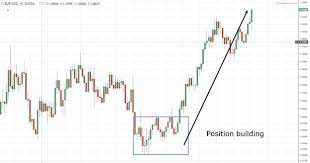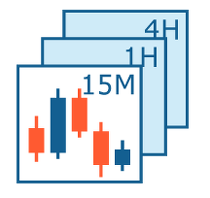Introduction
Switching back and forth between periods typically necessitates using a 1:4 or 16 percent inverse ratio. When you enter the market at the right time, you'll be able to see the more minor, more subtle changes in price. To be sure, paying attention to minute timeframes isn't worth it because most price movements have no bearing on overall trading and could cause market stress if things appear to be moving quickly. You can zoom in on a 10-minute or 15-minute chart (1:6) or 1:14 if looking at the hourly charts to find the most appropriate entry points. The 10- or 15-minute chart shows the shorter-term developments, whereas the hourly chart shows the trade's progress over a day or more.

Indicators and Analysis
- Now that you know how to perform fundamental and technical analysis as an investor, let's discuss the best way to conduct an analysis considering multiple timeframes.
- The chart with a 4-hour time frame is always our first choice. This chart is the best choice because it provides an overall picture of the current day. It's best to buy when the graph shows an upward trend.
- Our goal isn't to perform a 4-hour chart analysis as day traders. Our 15-minute chart will be put to good use. First, let's take a closer look at the one-hour chart.
- Once we've established a medium-term trend, we'll look for profitable trades on the 15-minute or 1-minute chart.
What Time Frames Do You Need to Keep an Eye on and Why?
The more time a signal has to be evaluated, the more reliable the signals are considered to be. Charts are tainted by false movements or noise when analyzed over a short period. The fundamental trend of the market should be established using a more extended timeframe by traders. As soon as a trader has identified the fundamental trend, they can use their preferred timeframe to identify an intermediate and short-term trend.
How to boost your bottom line with multi-timeframe analysis?
Swing Trader
A "swing trader" is a trader who opens positions and holds them for a few days before closing them. This trader looks for patterns and then buys or sells a specific asset based on those patterns. Most swing traders use an hourly, four-hour, or even daily chart in their trades. Using an hourly chart is not a good idea most of the time.
Scalper and Day Trader
One who engages in open and close trading throughout the day is called a "day trader. When it comes to day trading, there are two types of traders. Saddle traders come to mind first. They are traders who open a trade, then end it abruptly when they make a small profit. They use charts whose timeframe is less than 10 minutes. So the multi-timeframe analysis could be used to analyze charts of 15 minutes, 10 minutes, five-minute, or 1-minute charts. Then, there are day traders who aim to keep a trade open for a time. Their primary goal is to ensure the trades are completed when they go to sleep. An analysis of multiple timeframes is an excellent option to study a daily chart or a four-hour chart and then an hourly chart.
Long-term traders
The third category is long-term oriented traders, trading or buying an asset, keeping the trade open for a period of days or even months. This analysis may be done by looking at daily, weekly, or monthly charts: Daily and hourly charts. Make sure you use at least two and not more than three-time frames. Adding more information will make the geewillikers mad at you, and you'll have Analytical paralysis. You'll then go on to get lost.
Benefits
The trend could appear different on the timeframe you are viewing than the longer-term trend. Support and resistance might be visible in the vicinity of your trade, but they are not visible in the time frame in which you trade. It is possible that you took an excellent trade on an earlier time frame and achieved your goal, but you didn't know that if you had taken more extended time frames, you might have made greater profits. You can create precise entry points with shorter time frames but can't make precise entry points with more extended time frames.

Conclusion
A time frame is the number of time trends last in a market. This can be recognized and utilized by traders. Instant time frames can be used today and are suitable for day and high-frequency traders. Other time frames are also worth keeping at the forefront of your mind to verify or disprove the pattern or signal concurrent or contradictory patterns. These time frames may range from minutes to hours, weeks, days, or even more.




